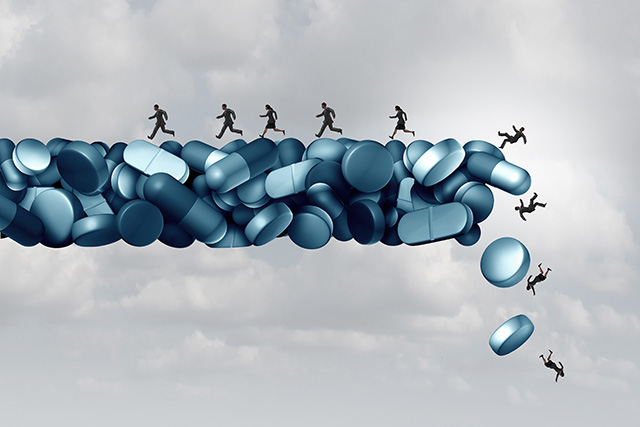
The consensus is pretty clear: Most addiction experts, physicians, and former addicts who work in the recovery field agree that Suboxone saves lives. The statistics are clear as well. It is estimated that the use of Suboxone and other “medications for opioid use disorder” (known as MOUD) lowers the risk of fatal overdose rates by 50 percent.
Because of medications like Suboxone, drug users are less likely to experience nonfatal overdoses as well. Whether fatal or not, overdoses are all extremely medically dangerous.
So, is Suboxone safe? As compared to the overwhelming number of overdoses being prevented, the answer is a resounding yes. Especially since the number of opioid deaths keeps rising. Why? Because the supply of Suboxone and the number of prescribers is not adequate to meet the need. The real danger seems to be not enough Suboxone.
The agreement on the life-saving nature of Suboxone is so widespread that the U.S. government – in an effort to increase the availability of Suboxone prescribers – has begun to lessen the requirements necessary for doctors and nurses to prescribe Suboxone and eliminated the need for a waiver.
So, we’re all in agreement that taking Suboxone is safer than overdosing – but the questions remain, the concerns are still being voiced, and the myths endure.
Suboxone, a combination medication containing buprenorphine and naloxone, is one of the main medications used to treat opioid addiction. Suboxone is itself an opioid, which is part of why there is concern about its safety as a treatment option.
Overdosing on Suboxone is rare, especially as compared to other opiates. Because Suboxone is a partial opiate receptor agonist, there’s a built-in safety ceiling. There is a limit to how much the opioid receptors can be activated by Suboxone – which translates to a reduced risk of depressed breathing as compared to opioids like heroin.
Suboxone, technically, is a partial opioid agonist and can in fact cause respiratory depression. Respiratory depression is a medical condition where your breathing gets too slow or too shallow, which can cause a lack of sufficient oxygen in the body. However, unlike other opioids, there is a ceiling effect to the respiratory depression at approximately 50% of baseline. Respiratory depression is the most severe Suboxone side effect. It occurs in less than 10 percent of Suboxone users, but those who experience this side effect are encouraged to seek help immediately.
Misuse or overdose of Suboxone are most often what increase the incidence of severe respiratory depression. It is extremely difficult to overdose on Suboxone alone. When severe respiratory depression occurs with Suboxone, it is almost always because Suboxone has been administered intravenously or has been taken with sedatives like benzodiazepines – because sedative medications also slow breathing.
All the research continues to show that Suboxone can support recovery and save lives – while also maintaining high safety margins.
Suboxone binds to the same receptors in the brain as other opiates do. When Suboxone is used, it blunts intoxication from the use of opiates like oxycodone, fentanyl, morphine, and heroin. Because it also effectively reduces cravings for opiates, it is an incredible tool for helping people transition out of opiate addiction and back to a life of normalcy and safety.
There’s that word again: safety.
For that reason, Suboxone has now become one of the primary tools used to treat opioid addiction. As we already discussed, a number of people are unable to obtain Suboxone, but nationwide, many recovery advocates are working to make Suboxone more widely available and accessible to people addicted to opiates.
The side effects of Suboxone can range from constipation to sugar cravings. Sometimes symptoms are more severe the first time you take Suboxone, but level out or disappear over time. You may experience any one or a combination of the following symptoms.
The bottom line is that users of Suboxone should keep in contact with and report all side effects to their treatment professional while they are taking Suboxone. As long as they avoid mixing it with sedatives such as benzodiazepines, overdoses and fatal respiratory depression are extremely rare.
The World Health Organization estimates that 15 million people are addicted to opiates. If you or someone you know is battling an opioid addiction, the Art & Science of Recovery is a life-changing opioid addiction treatment center in Broomall, PA, with all the tools necessary for true recovery and healing, including Suboxone treatment.
Call us today at (610) 624-3098 to see how we can help.